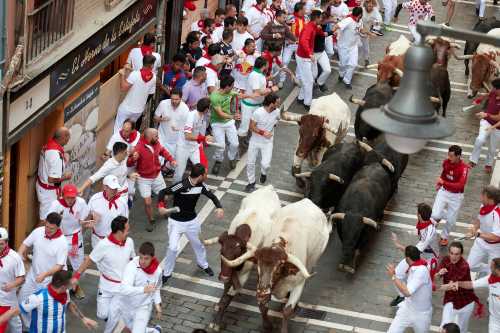Popular Trip Moments
Pamplona-Iluca is a city full of history and rich traditions | Historical Journey: Showcasing Navarre's Cultural Heritage from Prehistory to Present | Archaeological Site of Saint Nicholas Hermitage | The iconic landmark of the city's old town | Pamplona Must-Visit Attractions | Navarre Royal Archive in Pamplona: A Treasure of Spanish History | Pamplona's 800-year-old castle | 2 nights and 3 days trip to Pamplona | Discovering Spain: A Tapestry of Culture and Heritage | Pamplona
Popular Travel Types
Recommended Attractions at Popular Destinations
Bangkok attraction near me | Manila attraction near me | Tokyo attraction near me | Taipei attraction near me | Hong Kong attraction near me | Seoul attraction near me | Kuala Lumpur attraction near me | Los Angeles attraction near me | Shanghai attraction near me | New York attraction near me | Shenzhen attraction near me | Osaka attraction near me | Singapore attraction near me | London attraction near me | Guangzhou attraction near me | San Francisco attraction near me | Beijing attraction near me | Macau attraction near me | Bali attraction near me | Jakarta attraction near me | Paris attraction near me | Ho Chi Minh City attraction near me | Istanbul attraction near me | Phuket attraction near me | Chicago attraction near me | Seattle attraction near me | Toronto attraction near me | Orlando attraction near me | Cebu attraction near me | Chiang Mai attraction near me
Popular Attractions
Aquaria KLCC | The Bund | Universal Studios Japan | Prince Kung's Mansion | Bosphorus | Yaolin Wonderland Scenic Area | Grand Canyon Drifting in Wuzhishan | Chung Ying Street | Jingan Temple | Carnival Magic Phuket | Water Cube | Jingshan Park | Genting SkyWorlds Theme Park | Dakeng Scenic Area | Shanghai Wild Animal Park | InRome Cooking Classes | 2GO Travel - Cebu Main Ticketing Office | Dalianwan Fort | Mamma Mia! London | Shulechi Hot Spring Leisure Center | masjid baiturrahman | Rafting dan Offroad di Garut | Al Amin Mosque | Plaza Mayor de Mogarraz | Akhandalamani Temple | Haguro Kodo | Maa Sarala Temple | Church of San Pietro | Club Campestre Juarez | Teren spacerowy
Popular Restaurants in Pamplona
Baserriberri | Restaurante El Burladero | Bar Gaucho | El Búho | Cafe Iruna | MásQMenos Pamplona | Burgerheim | El Colegio | Asador Irache | La Tablita | Sidreria Chez Belagua | La Dolce Vita | Domino's Pizza | Los Burgos de Iruna | Le Petit Comite | Catachu | La Comedia | Asador El Pilon | Cerveceria Napargar | El Rincón de Pensar | Bar Restaurante Nevada | Bodegón Sarria | Kalean Gora Sidreria | La Mar Salada | Asador Iturrama | La Tagliatella | Kimu Sushi | Saint Wich | Cerveceria Aitzane | Pintxos y Brasas
Popular Ranked Lists
Popular Premium Hotels in Peapack and Gladstone | Top 10 Local Restaurants in Cancun | Top 9 Local Restaurants in Auckland Central | Popular Premium Hotels Near Brest | Popular Best Things to Do in Suining | Top 9 Local Restaurants in Jiuzhaigou | Top 10 Local Restaurants in Ottawa | Top 10 Local Restaurants in Calgary | Popular Premium Hotels in Grodno Region | Popular Best Things to Do in Chuxiong Prefecture | Top 9 Local Restaurants in Tongxiang | Top 8 Local Restaurants in Izmir | Top 10 Local Restaurants in Johannesburg | Popular Premium Hotels in Habaraduwa | Top 10 Local Restaurants in Nagasaki | Popular Best Things to Do in Ninghai | Top 10 Local Restaurants in The Rocks | Top 5 Best Things to Do in Xiangshan | Top 10 Local Restaurants in Tonglu | Top 10 Local Restaurants in Changli | Popular Luxury Hotels Near Makedni | Popular Best Things to Do in Xing'an County | Popular Premium Hotels in Mbabane | Top 10 Local Restaurants in Dallas | Popular Premium Hotels Near Jizan Region | Top 10 Local Restaurants in Linyi | Top 3 Best Things to Do in Sanmenxia | Popular Premium Hotels in Altai Republic | Popular Best Things to Do in Liancheng | Top 10 Local Restaurants in Dusseldorf
Payment Methods
Our Partners
Copyright © 2025 Trip.com Travel Singapore Pte. Ltd. All rights reserved
Site Operator: Trip.com Travel Singapore Pte. Ltd.
Site Operator: Trip.com Travel Singapore Pte. Ltd.












